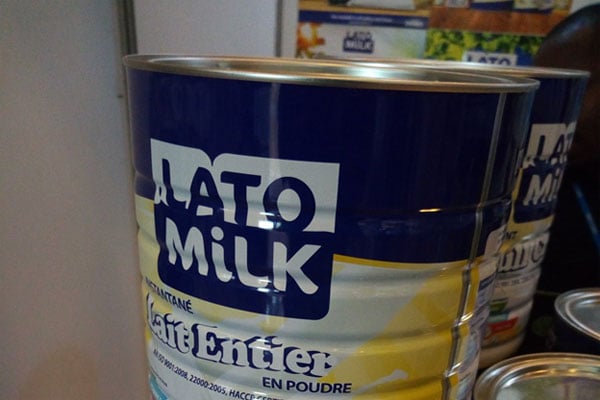Kenya agrees to remove tariff barriers on Uganda’s exports

Lato milk has in the last four years been one of the biggest victims of Kenya’s trade blockades. Photo / File
What you need to know:
- Kenya has in the last four years blocked a number of Ugandan exports, among which include milk, sugar, beef and poultry products, among others
Kenya and Uganda have agreed to focus on industrial policy at regional level instead of engaging in “unnecessary and costly competition”, the Ministry of Finance Permanent Secretary and Secretary to the Treasury, Mr Ramathan Ggoobi has said.
The move follows discussions, in which Mr Ggoobi said last week he had paid “a courtesy call on my Kenyan counterpart, Dr Chris Kiptoo” the new Kenya Principal Secretary, National Treasury to discuss trade and non-tariff barriers.
“[I] Paid a courtesy call on my Kenyan counterpart, Dr Chris Kiptoo, the new PS/ST. [We] agreed to focus our nations to doing industrial policy at regional level as opposed to engaging in unnecessary and costly competition,” he wrote on Twitter.
Efforts to get details of the discussions were futile by press time. Messages and phone calls to Mr Ggoobi’s known mobile phone numbers remained unanswered.
However, Mr Ggoobi also indicated that Uganda and Kenya, through the discussions, had also agreed to eliminate non-tariff barriers, especially on Ugandan exports, noting that focus would now be put on joint investments.
“No more [non-tariff barriers] NTBs on our [Uganda] exports to Kenya. We gonna (sic) do joint investments,” he said.
However, Mr Ggoobi did not indicate when and how details of the discussion would be implemented.
The move is expected to relax trade tensions between Uganda and Kenyan authorities, in which Ugandan exporters have, in the last four years, suffered numerous losses through unexplained blockades and non-tariff barriers.
A number of Ugandan products, including sugar, milk, poultry and beef products, sugarcane and maize have for a long been subjects of blockades, occasioning huge losses to exporters.
However, President William Ruto has indicated that his administration would eliminate any non-tariff barriers that had been instituted under former president Uhuru Kenyatta.
Uganda is one of Kenya’s biggest export market, earning the country in the excess of $1b annually. Data from Bank of Uganda indicate that Kenyan exports to Uganda during pre-Covid-19 years had been growing, increasing from $1.1b in 2017 to $1.2b in 2018.
However, whereas Kenya continues to benefit from Uganda’s open trade policies, blockades have as a result cost Uganda more than 114,810 jobs, particularly in manufacturing and the agricultural value chain.
Similarly, Uganda’s exports to Kenya, among which included, sugar and confectionaries, coffee, honey, dairy products, eggs and cereals, fetch lower earnings compared to what Kenya fetches from its exports.
For instance, in 2020, Uganda earned about $465.55m (Shs1.7 trillion) from its exports to Kenya, according to the Kenya Association of Manufacturers.
The trade imbalance has been worsened by protectionist tendencies exhibited in the last four years.
Milk producers and beef and poultry products producers have previously been key in lobbying the Kenyan government to block some products from Uganda to protect local producers and industries.
Uganda has enough maize to export to Kenya
Meanwhile, Agriculture Minister Frank Tumwebaze, has said Uganda has built sufficient capacity in the country’s grain industry to supply both internal and external demand.
Speaking in an interview about Kenya’s expected growth in demand for maize imports, Mr Tumwebaze said Kenya should look towards Uganda for its grain supplies because the country has enough for both internal and regional markets.
“Our grain harvest forecast for this season is promising and so, we can manage to feed our internal and regional markets,” he said.
Last week Kenya indicated that that it expects its maize production to drop in the coming nine months, noting that the supply gap would be expected to be filled by cross-border imports from regional markets.
“The available stocks expected this year will last for nine months and Kenya will have to rely on cross-border imports to meet the deficit,” a market analysis, reported by Business Daily, indicated.
The drop creates an opportunity for Ugandan grain exporters, who, despite previous blockades, have been one of the biggest suppliers of maize to Kenya.
Ms Victoria Sekitoleko, the former agriculture minister and deputy chairperson of Private Sector Foundation Uganda, said farmers should plan ahead but should ensure that they use recommended seeds and fertilisers to benefit from the loaming demand while those harvesting, should take precaution not to jeopardise the opportunity.
“Ensure quality and get a good price. Avoid middlemen,” she said.
Previously, Kenya has blocked Uganda’s maize from entering its market, forcing exporters to search for alternative markets in South Sudan, DR Congo and northern Tanzania.
Prices of maize flour have within Uganda and the region increased due to droughts in different countries within East Africa.
Mr John Lwere, the Uganda Export Promotion Board export officer, told Monitor last week that Uganda’s largest maize market remains Kenya with at least 75 percent exported to the country.
Kenya is followed by South Sudan, Burundi and DR Congo, respectively.
“Tanzania does import but its volumes vary significantly from year-to-year, while Rwanda starting 2017, the volumes have been declining to almost zero because of border disputes,” Mr Lwere noted.
Data from Bank of Uganda indicates that Uganda maize exports are worth $5.7m (Shs21b) per month, which translates into an annual average of $69.2m (Shs523b).
During the year ended November, Bank of Uganda data indicated, earnings from maize imports increased by 23 percent from $52.2m (Shs193b).





